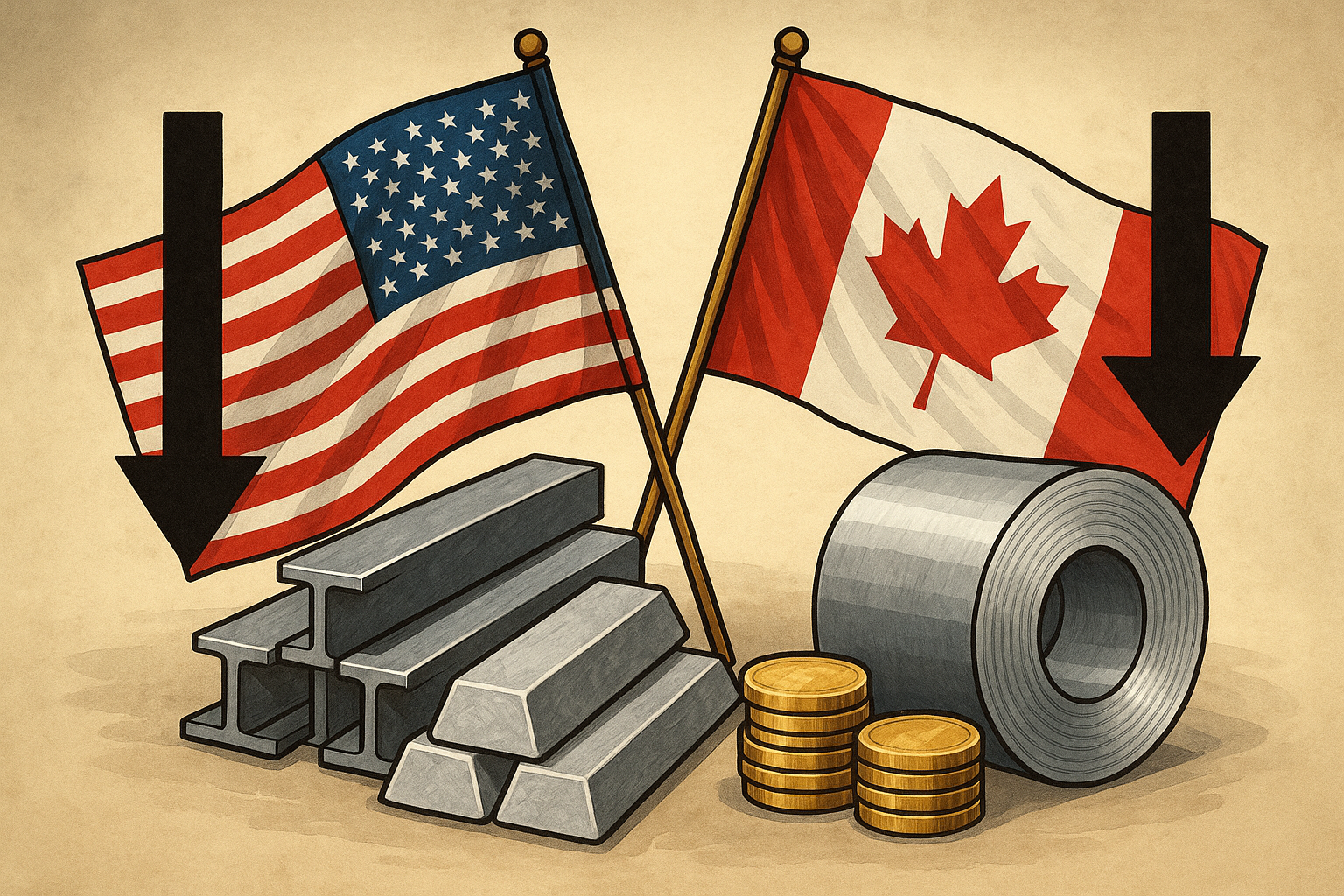The cross-border trade tensions between Canada and the United States are once again flaring—this time with major implications for metals markets. On July 3, the U.S. government moved to double tariffs on Canadian steel and aluminum imports, escalating rates to 50%. In response, Canada is preparing retaliatory tariffs that could trigger a tit-for-tat standoff, placing pressure on North American supply chains and mining equities.
For investors, this escalation doesn’t just represent a diplomatic rift—it signals potential earnings volatility across key sectors and could reshape the outlook for both Canadian and U.S.-listed metals producers.
Why It Matters for Investors
The latest U.S. tariff hike directly targets primary metals, particularly steel and aluminum—materials central to construction, auto manufacturing, and energy infrastructure. Canada, which ranks as the largest exporter of aluminum to the U.S. and a top supplier of semi-finished steel, has long relied on the integrated supply chains between the two nations.
According to data from the Canadian Steel Producers Association, approximately 90% of Canadian steel exports go to the U.S. A tariff spike of this magnitude could disrupt long-standing contracts, delay shipments, and push buyers to explore alternative suppliers in Mexico, Europe, or Asia.
Meanwhile, Ottawa has signaled a measured but firm response. In comments to Reuters, a Canadian Trade Ministry official stated that countervailing tariffs are being prepared, likely mirroring the scope and intensity of the U.S. move. The official emphasized the government’s aim to “defend Canada’s economic interests and maintain trade balance.”
Impact Across the Metals and Mining Landscape
For Canadian mining and metals companies, especially publicly traded steel and aluminum producers like Stelco Holdings (TSX: STLC), Russel Metals (TSX: RUS), and Rio Tinto’s Canadian operations, the tariffs represent a double-edged sword:
- Export-dependent firms could see shrinking U.S. revenues due to decreased price competitiveness.
- Margins may compress as companies absorb higher costs or divert inventory to less lucrative markets.
- Supply chain uncertainty may impact capital planning, workforce decisions, and project pipelines.
South of the border, U.S. manufacturers reliant on Canadian inputs are also bracing for increased costs. Automakers and aerospace firms—especially in the Midwest—are warning of input inflation and production slowdowns. The National Association of Manufacturers has urged Washington to reconsider, citing the 200,000 U.S. jobs tied to Canadian metals.
Future Trends to Watch
1. Shifting Trade Routes: With tariffs dampening U.S.-Canada metals trade, watch for Canadian exporters to diversify toward Asia-Pacific and European markets, especially where free-trade agreements offer tariff relief.
2. Domestic Substitution: U.S. producers may benefit in the short term from reduced competition—but only if they can scale output fast enough to meet demand without further price inflation.
3. Government Subsidies: Both countries could introduce temporary subsidies or tax relief for affected industries, similar to what followed the 2018 U.S. steel tariffs.
4. Currency Volatility: The Canadian dollar may face short-term pressure as trade uncertainty rises, creating FX risks for cross-border investors and import-reliant firms.
Key Investment Insight
Investors should monitor equities with exposure to international metals trade—especially those with high U.S. revenue concentration. Hedging strategies or reallocation toward firms with domestic or diversified global demand could offer protection. In particular:
- Teck Resources (TSX: TECK.B) and Labrador Iron Ore Royalty Corp. (TSX: LIF) may offer safer exposure due to broader commodity portfolios.
- Gold and precious metals miners could outperform in a risk-off environment, benefiting from safe-haven flows amid geopolitical uncertainty.
ETF investors may also consider reducing exposure to sector-specific funds like ZMT.TO (BMO Equal Weight Global Base Metals Hedged to CAD ETF) if trade tensions escalate further.
As this trade narrative continues to unfold, all eyes are on the next moves from Ottawa and Washington—and their potential ripple effects on commodity prices, investor sentiment, and market volatility.
For more real-time insights on metals markets and investor-driven policy shifts, stay with MoneyNews.Today—your go-to source for actionable financial intelligence.





